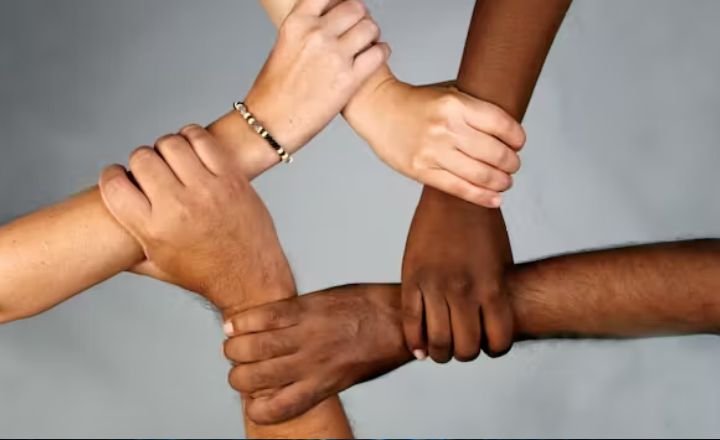
Who Lives in Your Neighborhood: Understanding the Diversity Around You
The local you live in assumes a pivotal part in shaping your life. It’s something other than an assortment of houses; it’s a local area loaded up with individuals from various different backgrounds.
Understanding Who Lives in Your Neighborhood you to fabricate more grounded associations, cultivate shared regard, and establish a steady climate. In this article, we’ll investigate the different parts of neighborhood variety, from its significance to how you can connect with individuals around you.
What Makes a Neighborhood?
An area is a characterized region where individuals reside, work, and cooperate. It very well may be a little road or a bigger local area with shared offices like stops, schools, and markets. The vital component of any area is its occupants — the families, people, and gatherings who carry life and character to the area.
Each area has its novel character molded by factors like social foundations, age gatherings, and financial states of its occupants. These distinctions add to the variety that makes areas energetic and intriguing.
The Importance of Knowing Your Neighbors
Realizing who lives in your area goes past perceiving faces. It constructs a feeling of having a place and trust inside the local area. At the point when you know your neighbors, you’re bound to have a good sense of security, upheld, and associated.
Building associations with neighbors can likewise make life more helpful. From getting a fundamental thing to sharing nearby news or aiding each other in crises, having a decent compatibility with everyone around you can improve your personal satisfaction.
Types of People You May Find in a Neighborhood
Neighborhoods are much of the time home to a blend of people and families from different foundations. Here is a more intensive glance at a few normal gatherings:
Families with Kids: These families are typically dynamic during school hours and frequently assemble at parks or jungle gyms. They add to the energy of a local area.
Old Occupants: Seniors frequently appreciate calmer lives however assume a fundamental part in adding shrewdness and history to the area.
Youthful Experts: These people bring energy and development, frequently shuffling work and social exercises.
Social People group: A few areas have bunches of individuals from comparable social or ethnic foundations, making a feeling of commonality and social lavishness.
Benefits of a Diverse Neighborhood
A different area gives various advantages to its occupants. It expands points of view and shows resistance and understanding. Cooperating with individuals from various societies and foundations encourages inclusivity, making the local area more grounded and more joined together.
Besides, variety frequently converts into a more extensive scope of abilities and assets inside the local area. For instance, you could find neighbors who can offer exhortation on cultivating, cooking, or even proficient administrations, establishing a commonly useful climate.
Challenges of Living in a Neighborhood
While living in an area enjoys its benefits, it can likewise introduce difficulties. Contrasts in ways of life, social practices, or commotion levels can once in a while prompt misconceptions or clashes.
Moreover, neighborhoods with high populace thickness could battle with issues like stopping, squander the board, or congestion. Successful correspondence and a readiness to collaborate are fundamental for settling these difficulties and keeping up with concordance.
How to Build Stronger Relationships with Neighbors
Building associations with neighbors doesn’t work out pretty much by accident. It requires exertion and authentic interest. The following are a couple of moves toward encourage associations:
Begin by presenting yourself when you move in or when another neighbor shows up. Basic signals like sharing a dinner, welcoming them for tea, or offering assistance can loosen things up. Go to local area occasions, similar to neighborhood cleanups or celebrations, to meet more individuals.
Regard is the underpinning of any relationship. Value the distinctions in suppositions, ways of life, and societies, and try not to force your convictions on others. Little thoughtful gestures, such as monitoring older neighbors or aiding somebody out of luck, go far in building altruism.
The Role of Community Activities
Local area exercises assume a huge part in uniting neighbors. Occasions like neighborhood bashes, special festivals, or nearby foundation drives energize social connection and make enduring recollections.
Taking part in these exercises not just assists you with realizing who lives in your area yet in addition encourages a feeling of solidarity. Cooperating for a typical reason reinforces securities and makes the local area a superior spot for everybody.
Historical Evolution of Neighborhoods
Neighborhoods have evolved over time, shaped by migration, urban planning, and social trends. In the past, communities were often formed around shared occupations, such as farming or trade. Over time, industrialization and urban development brought people from different backgrounds together, creating the diverse neighborhoods we see today. Understanding this evolution helps us appreciate the unique history behind each community.
Historical Evolution of Neighborhoods
Neighborhoods have evolved over time, shaped by migration, urban planning, and social trends. In the past, communities were often formed around shared occupations, such as farming or trade. Over time, industrialization and urban development brought people from different backgrounds together, creating the diverse neighborhoods we see today. Understanding this evolution helps us appreciate the unique history behind each community.
How Geography Shapes Neighborhood Demographics
Geography plays a significant role in determining the makeup of a neighborhood. For example, neighborhoods near universities often attract students, while coastal areas may be home to retirees seeking tranquility.
Urban centers are typically more diverse, with people from different cultures and socioeconomic backgrounds coexisting, whereas rural areas might have more homogeneity. The geographic setting influences the lifestyle and opportunities available to residents.
Conclusion
Your neighborhood is more than just a place to live; it’s a community filled with diverse individuals, each contributing to its unique character. Understanding who lives in your neighborhood and building connections with them enhances your life and creates a more harmonious environment.